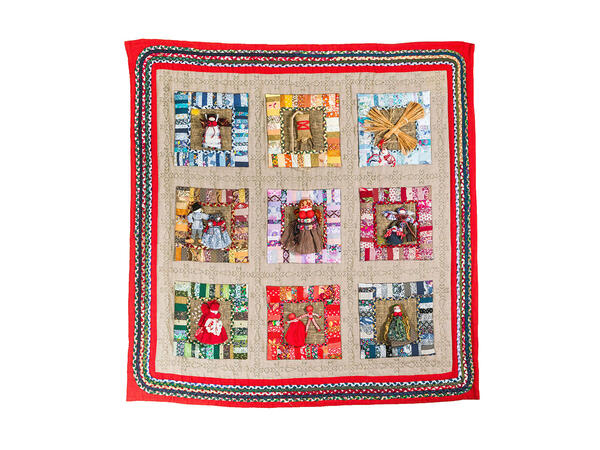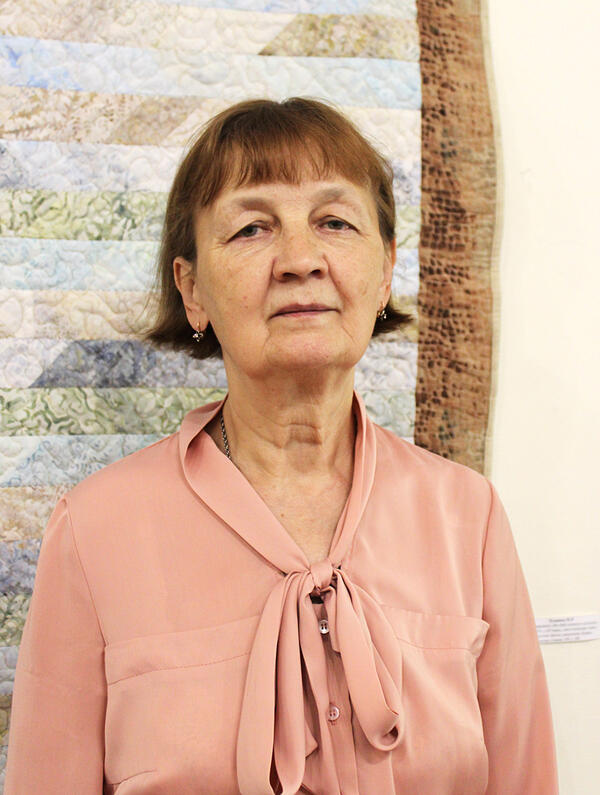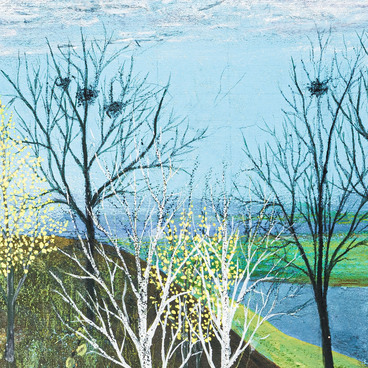Natalia Artemova and Elena Loginova, two cratfswomen from the Urals, created a panel ‘Flowers of the Virgin’ in 2009. It consists of nine square ‘windows’, each with a doll at its center. These images reflect the authors' view of the women’s role in society.
The doll called “Female Entity” is located in the center of the top row. It belongs to the traditional type of rag dolls. Such figurines were folded by hand from fabric and threads and often used for ritual purposes.
To its right is a figurine called “Cuckoo”. In Slavic tradition, cuckooing was considered a magical sound. People used cuckooing to find out how many years they had left, and girls asked cuckoos how soon they would get married. The bird has a swaddle doll in its beak. In the old days, people believed that these little guardians could protect children from danger and took their illnesses upon themselves.
In the left square of the central row there is the original composition “Wife”. It is based on traditional doll types like “Busty Girl” and “Straight Standing Doll”. The last-mentioned doll was done by folding a thick column from the fabric and tying it with threads. The twisting and folding in the folk rag doll were symbols of marriage and love.
The craftswomen added “Husband” to the composition of the doll, and “Straight Standing Doll” got two swaddle babies in her arms. Here you can see a couple with two children representing a peasant family.
Under “Cuckoo”, the artists placed a Karelian “scrap doll” — a doll the size of a palm made of a ragged patch. The fabric for this doll was always taken from used clothes. Peasants believed that old things could transfer the power of the owner to other people and that it could influence the former owner.
Masters Natalya Artemova and Elena Loginova, who created the panel “Flowers of the Virgin”, became interested in patchwork during the course at the “Gamayun” Museum Center. Patchwork, or patchwork sewing, is a type of decorative and applied art in which an entire work is sewn from patches following the principle of mosaic. The result is a product with an original pattern and an unusual color design.
Natalya Artemova was born in Sverdlovsk. She graduated from the Ural State Economic University and worked at the Sverdlovsk industrial enterprise. Elena Loginova was born in the nearby Chelyabinsk region and devoted her whole life to studying chemistry. Both craftswomen engaged in different kinds of handicrafts in their spare time, until they decided to focus on patchwork sewing in the mid-2000s.
The doll called “Female Entity” is located in the center of the top row. It belongs to the traditional type of rag dolls. Such figurines were folded by hand from fabric and threads and often used for ritual purposes.
To its right is a figurine called “Cuckoo”. In Slavic tradition, cuckooing was considered a magical sound. People used cuckooing to find out how many years they had left, and girls asked cuckoos how soon they would get married. The bird has a swaddle doll in its beak. In the old days, people believed that these little guardians could protect children from danger and took their illnesses upon themselves.
In the left square of the central row there is the original composition “Wife”. It is based on traditional doll types like “Busty Girl” and “Straight Standing Doll”. The last-mentioned doll was done by folding a thick column from the fabric and tying it with threads. The twisting and folding in the folk rag doll were symbols of marriage and love.
The craftswomen added “Husband” to the composition of the doll, and “Straight Standing Doll” got two swaddle babies in her arms. Here you can see a couple with two children representing a peasant family.
Under “Cuckoo”, the artists placed a Karelian “scrap doll” — a doll the size of a palm made of a ragged patch. The fabric for this doll was always taken from used clothes. Peasants believed that old things could transfer the power of the owner to other people and that it could influence the former owner.
Masters Natalya Artemova and Elena Loginova, who created the panel “Flowers of the Virgin”, became interested in patchwork during the course at the “Gamayun” Museum Center. Patchwork, or patchwork sewing, is a type of decorative and applied art in which an entire work is sewn from patches following the principle of mosaic. The result is a product with an original pattern and an unusual color design.
Natalya Artemova was born in Sverdlovsk. She graduated from the Ural State Economic University and worked at the Sverdlovsk industrial enterprise. Elena Loginova was born in the nearby Chelyabinsk region and devoted her whole life to studying chemistry. Both craftswomen engaged in different kinds of handicrafts in their spare time, until they decided to focus on patchwork sewing in the mid-2000s.




